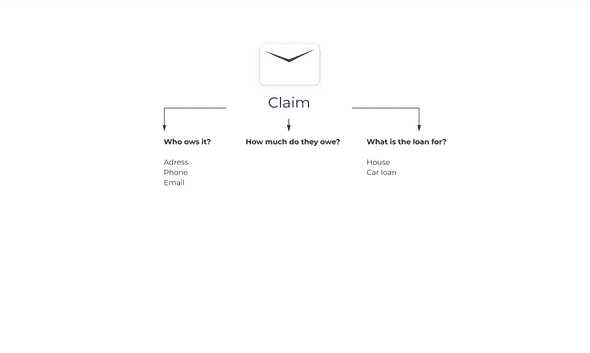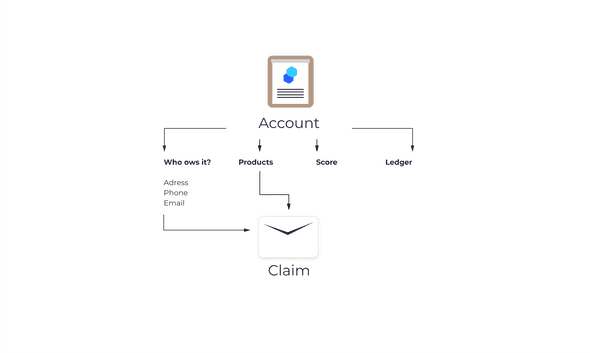Accounts and Claims
What is the difference between an Account and a Claim?
The Claim is an outstanding payment that you may have that is owed by another party. Typically this is a person and the outstanding payment could be anything from a loan instalment to a simple transaction. A claim has a due date, an amount, and some other basic information.
An Account, on the other hand, is made up of the data around the claims, and links claims together over time. It may include more data, and has an actual ledger, so that way you can use Receeve as a System of Record.
Meta Data
In both cases, you have the ability to use whatever data you would like by placing it into Receeve. We have a core model that handles all of the basics, but we have organizations with 2 extra data points, and others with several thousand. You can decide how you want that data organized inside the meta data. This makes it accessible to the operational teams in their collections strategies, decisioning, or even content.
Let’s take the example where you have a special score that you have calculated internally, or that you have a data model that outputs a particular repayment policy. It might look something like:
{
"internalScore": "A",
"PaymentPolicy": {
"limitDays": 90,
"minimumPayment": 200
}
}
Regardless of which integration type you choose, there is a meta field in the calls for creating or updating the claims and accounts. The above example would look something like:
...
"meta": {
"internalScore": "A",
"PaymentPolicy": {
"limitDays": 90,
"minimumPayment": 200
}
},
...

